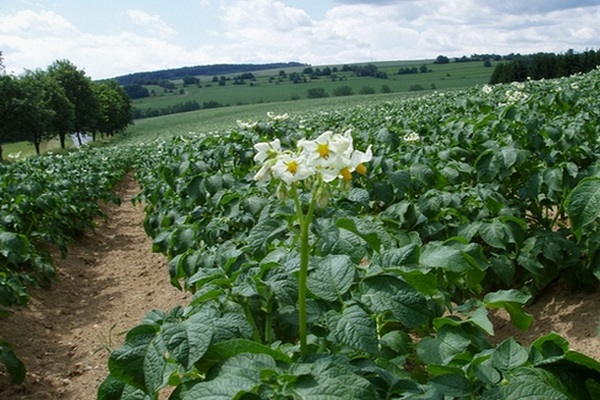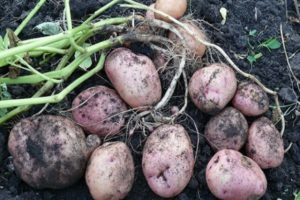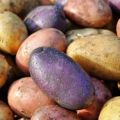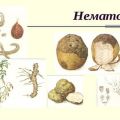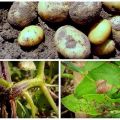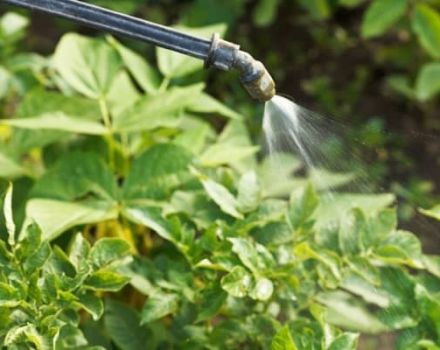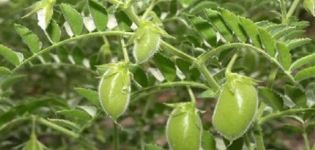Mineral fertilizers, superphosphates and folk remedies for foliar feeding of potatoes
Foliar dressing of potatoes during flowering plays an important role in the development of culture. The level of plant productivity depends on this. To increase crop fertility, you need to know when to fertilize. It is also important to know the rules of selection.
Foliar dressing
It is necessary to apply fertilizers in several stages:
- after landing;
- during the formation of buds;
- after flowering;
- before harvesting.
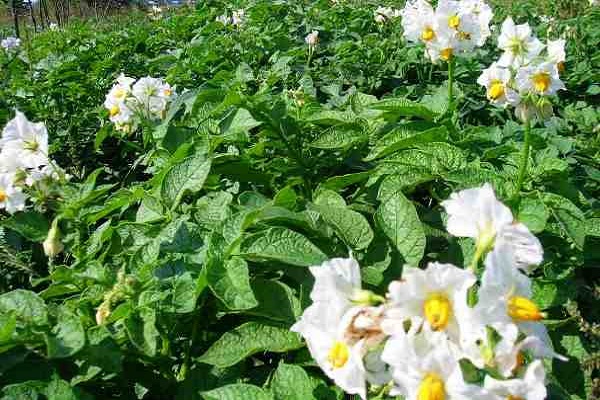
The flowering of the culture means that half of the microelements have already been absorbed, so it is important to choose the right fertilizers for feeding. Processing is usually carried out in the morning or evening. It is not recommended to spray the drug in hot weather. The air temperature should not be lower than +15 degrees.
The prepared solution is sprayed onto the bush. The procedure is no different from spraying potatoes in pest control. After processing the culture, nutrients penetrate into the potato through the stem and leaves. If you use this type of feeding, you can not only supply the plant with useful substances, but also protect it from many diseases.

After landing
2 weeks after planting, the culture begins to actively grow and develop, at this time the growing season occurs. The plant is very young, therefore, for active growth, it needs to consume a sufficient amount of trace elements. At this time, the vegetable, first of all, needs nitrogen. The development of the bush depends on it.
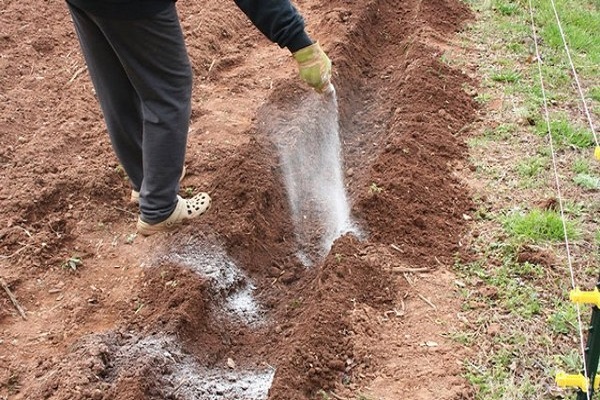
What to feed?
It is very important that the culture does not need micro- and macroelements during the formation of tubers. Potassium, nitrogen and phosphorus take an active part in the development of root crops throughout the entire life cycle. The greatest effect will be brought by top dressing, which was carried out during the formation of the first ovaries. Care must be taken not to miss this period.

Superphosphate
Before flowering, it is advisable to use for feeding superphosphate... To prepare the solution, you must do the following:
- Take 20 g of superphosphate, 2 g of ammonium nitrate, potassium chloride and 0.1 g of copper sulfate.
- Mix all components.
- Cover with warm water and leave for 3 hours.
- Strain the resulting liquid.
- Dilute with plain water, observing the proportions - 1: 1.
- The spray solution is ready. Then it can be poured into the tank.
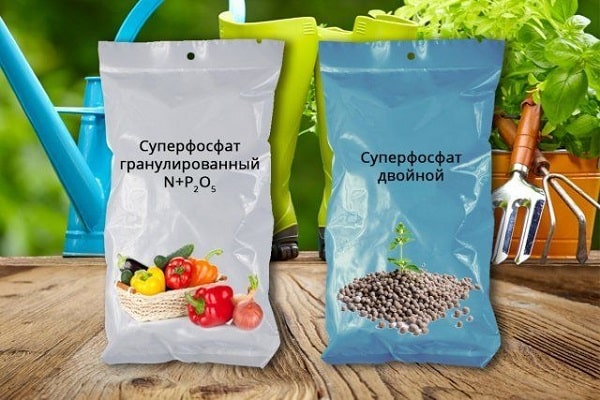
It is better to prepare the composition on the basis of rainwater. Foliar feeding of potatoes with superphosphate can improve plant photosynthesis. Penetrating into the plant's body, the components start important biological processes.As a result, growth and development are accelerated and resistance to disease is increased.
Other feeding methods
Folk remedies can also saturate potatoes with useful substances. Nettle is used to create fertilizers. The herbal solution is very beneficial for potatoes. How to prepare it:
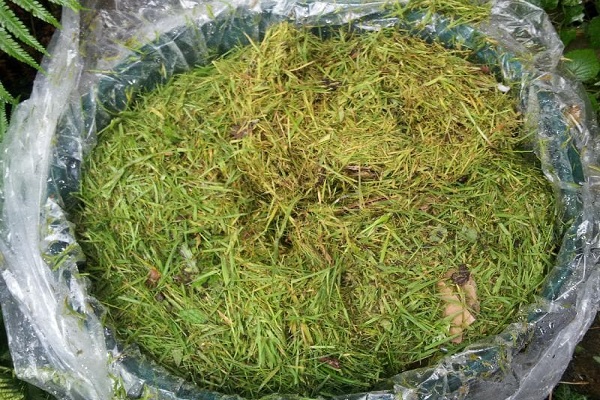
- You only need the stems of a plant with green leaves. The roots must be removed.
- The nettle is placed in a container and completely filled with water. The liquid should cover the plant.
- Cover and leave in a warm place.
- The solution should be infused until the fermentation process begins.
- The finished liquid is filtered and diluted with rainwater.
- Now you can start processing the culture.
The prepared product contains calcium, iron and nitrogen - useful substances that potatoes need. The spraying procedure can be repeated several times. Be sure to maintain an interval of 2 weeks between fertilization. Spray the crop as soon as potato shoots appear.
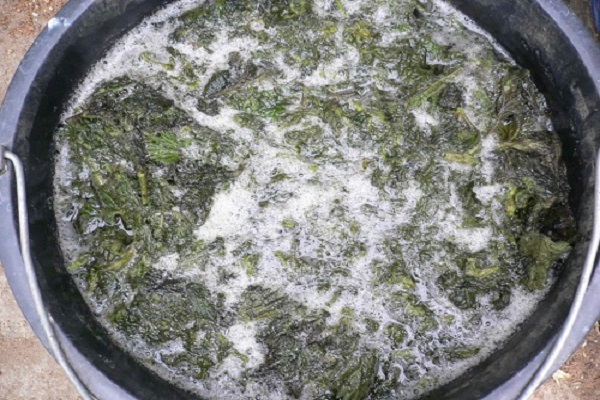
Nettle is a plant that is rich in nitrogen. The solution prepared on the basis of nettle is a natural organic supplement.
The next stage of feeding
After flowering, the culture needs two additional dressings, which are carried out sequentially. Their main goal is to improve the taste of potatoes. They also affect the size of the tubers and this increases the yield. Various means can be used for feeding.
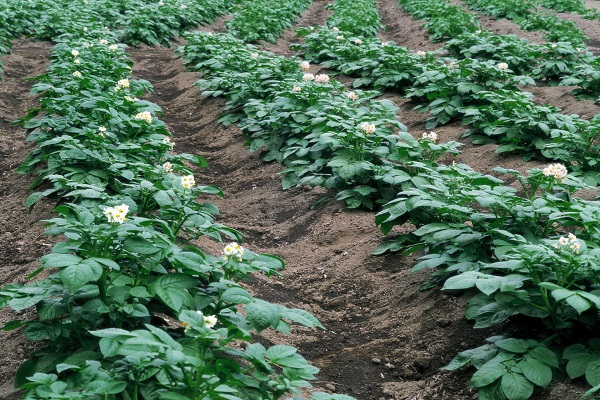
Microfertilizers
To make the tubers have a bright, rich taste, the culture is sprayed with manganese. Since root crops ripen in the soil, a person cannot be 100% sure that the crop has tubers. In order not to form voids, boron is used. For open ground, you can use the drug Mag-Bor, since it contains these two components.
To prepare the solution, take 1 tbsp. l. funds and diluted in 10 liters of water. Culture needs nutrients. Therefore, for 1 bush of potatoes, you need 5 liters of prepared liquid. You will have to prepare a large amount of solution, but it will be worth it.
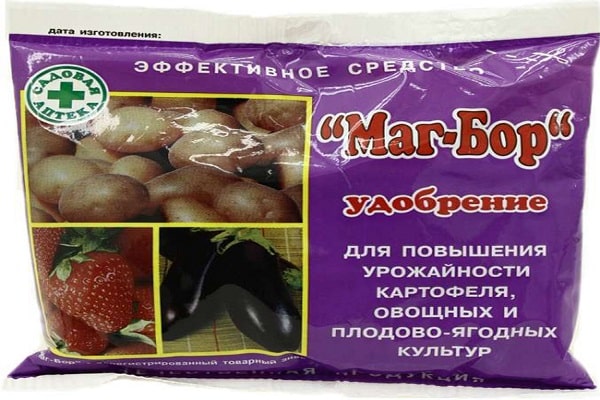
For foliar feeding, use the same Superphosphate as before flowering. Fertilizer is applied a month before harvesting. Usually, the dates for digging tubers fall at the end of August and continue until the beginning of September. For foliar feeding of potatoes, 350 g of the drug per 1 hundred square meters is enough. Granules do not need to be diluted in water, it is enough to scatter them around each bush.
Thus, the nutrients in the leaves will be transferred to the tubers. At the same time, their value will increase.
Foliar dressing of potatoes can be done by spraying the green mass of the vegetable with a preparation that contains phosphorus. For 10 liters of water, take 100 g of the product. This amount is not enough to process the entire potato plantation, it will be necessary to additionally dilute the product. Phosphorus is absorbed through the leaves and stems, which increases its sugar content and starchiness.
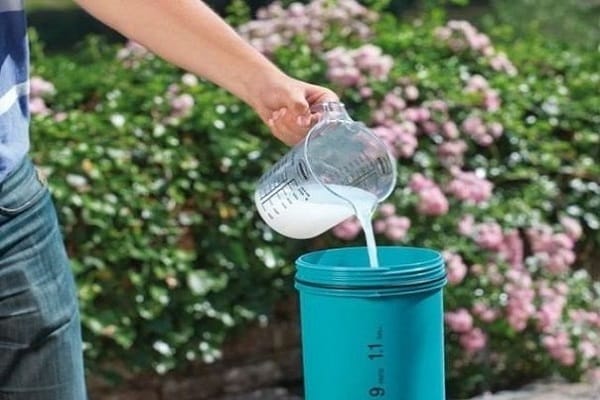
Vegetable growth
For the good development of culture, mineral fertilizers are needed. The most basic:
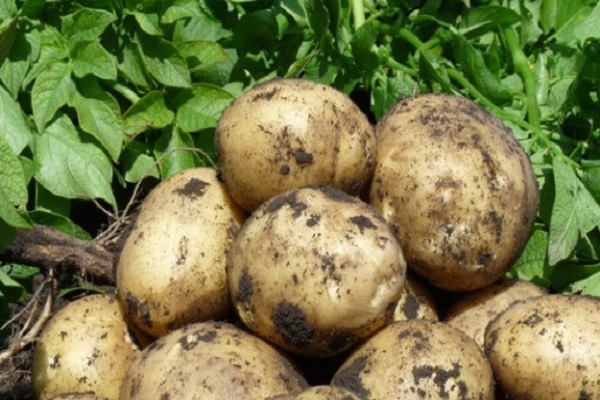
- Nitrogen. If there is not enough of this substance in the soil, young shoots stop growing, and the leaves brighten. If the situation is not corrected, the ovary will fall off.
- Magnesium. Affects exclusively the growth of bushes.
- Copper. With a deficiency of the component, the leaves dry out and curl into tubes.
- Phosphorus. A small amount of phosphorus is not able to saturate the culture; over time, it stops growing, and the leaves die off. It promotes good root development. Strengthens the protective properties of the plant.
- Manganese. Responsible for the movement of sugars in the vegetable, stimulating growth.
- Potassium. The growing season is not complete without potassium. It not only strengthens the root and stems. Also prepares the vegetable for the dry season.
- Bor.Regulates the degree of culture resistance to various diseases.
- Iron. Due to the lack of iron, the edges of the leaves turn yellow very quickly.

From this list, you can understand how important minerals are for potatoes. A person should always keep an eye on the appearance of culture. Any changes for the worse indicate a lack of certain components. To provide the vegetable with good conditions for growth, it is enough to carry out processing with the most affordable and simplest preparations.
Foliar feeding plays an important role in the development of potatoes. If you regularly apply fertilizers at all stages of growth and development of the crop, the vegetable will not need trace elements. At the end of the season, potatoes will delight you with a large harvest. The tubers will be large and tasty. Therefore, we feed the potatoes!
